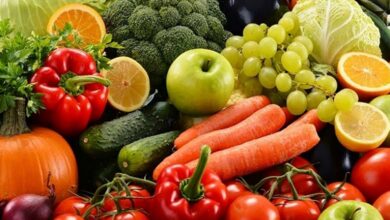Can You Get the Benefits of Retinol from Food?

Retinol, the active form of vitamin A, has become a staple ingredient in the skincare industry. Celebrated for its anti-aging properties, it’s widely used to brighten skin tone, stimulate collagen production, and promote cell turnover. Yet, among those seeking more natural approaches, a key question emerges: can diet alone provide the same benefits as topical retinol? In other words, can we nourish our skin from within and skip the serums?
-
Vitamin D or Fish Oil – Which One Is Better for Your Health?
-
Understanding Vitamin B and Its Dietary Sources
What exactly is retinol?
Retinol is part of the retinoid family—compounds derived from vitamin A. It exists in two primary forms:
- Preformed vitamin A (retinol) found in animal-based foods like liver and dairy.
- Provitamin A (beta-carotene) found in colorful fruits and vegetables, which the body converts into retinol.
Retinol works primarily on the skin by promoting cell renewal, reducing pigmentation and fine lines, and enhancing firmness and texture.
-
The Best Vitamins for Healthy and Glowing Skin
-
Your Shadow in the Sun Reveals a Vitamin D Deficiency
Dietary sources of retinol and provitamin A
There are two main dietary sources of vitamin A:
- Foods rich in active retinol (preformed):
- Beef, chicken or cod liver
- Egg yolks
- Whole dairy products (butter, cheese)
- Fatty fish (salmon, mackerel)
- Foods rich in beta-carotene (provitamin A):
- Carrots
- Sweet potatoes
- Spinach
- Mangoes
- Pumpkin
- Apricots
- Kale
The body can convert beta-carotene into retinol depending on individual needs, though the efficiency of this conversion varies with genetics, nutritional status, and gut health.
-
“Sun Vitamin”: How to Get Enough Without Harming Your Body?
-
4 Foods That Boost Vitamin D Production in the Body
Can food deliver the same effects as topical retinol?
This is where it gets nuanced. While a well-balanced diet rich in vitamin A is crucial for overall skin health, diet alone cannot replicate the targeted cosmetic effects of topical retinol.
Topical products deliver higher concentrations of retinol directly to the skin, where it acts on the epidermis to stimulate cellular turnover and modify dermal structure. These effects are localized and measurable—something food-based vitamin A can’t achieve with the same intensity.
That said, a nutrient-dense diet rich in vitamin A and antioxidants can prevent premature aging, support skin health, and enhance the effectiveness of topical treatments.
-
Vitamin E deficiency: Here are 4 eye-opening signs!
-
4 Reasons to consume vitamins during the winter season
Risks and precautions
Vitamin A is fat-soluble and stored in the liver. In excess—especially through supplements or overconsumption of liver—it can lead to hypervitaminosis A, which may cause liver damage, headaches, dry skin, and in pregnancy, birth defects.
On the other hand, deficiency in vitamin A can result in dry eyes, impaired night vision, and deteriorated skin or mucous membrane integrity.
While food can significantly contribute to skin health through vitamin A, it does not replace the targeted power of topical retinol. For a holistic approach to skincare, combining a diet rich in provitamins and antioxidants with an appropriate topical regimen is the optimal path. As with all things health-related, balance, moderation, and personalization are essential—whether you’re eating your vitamins or applying them to your skin.












